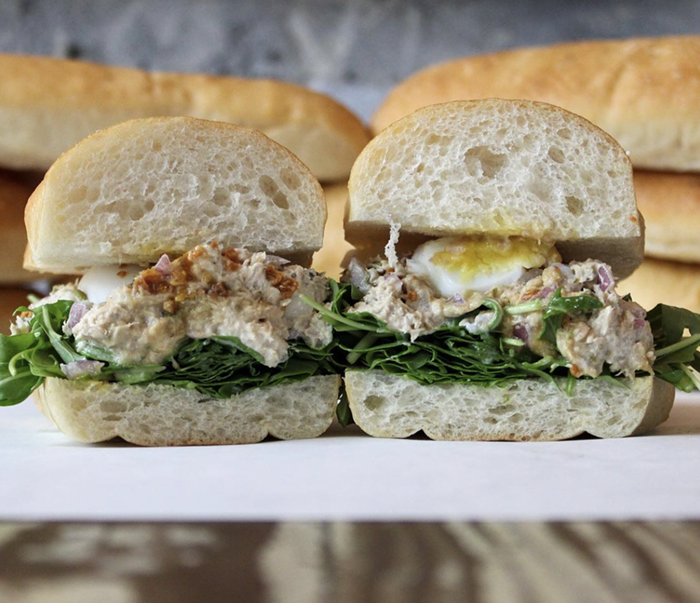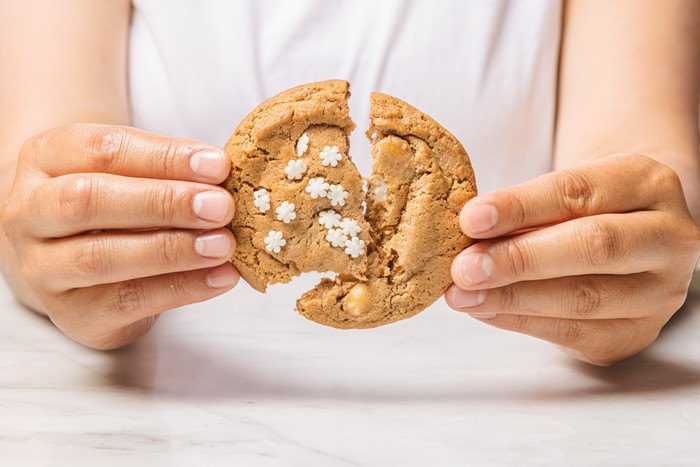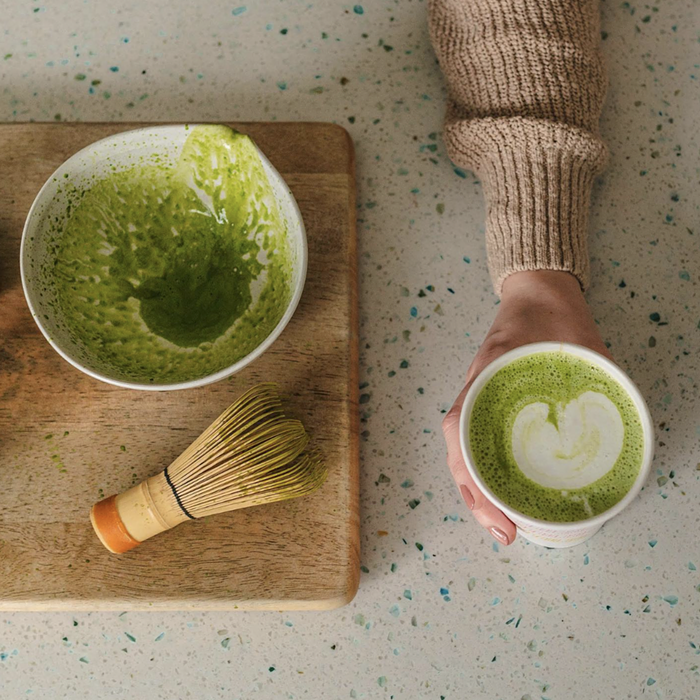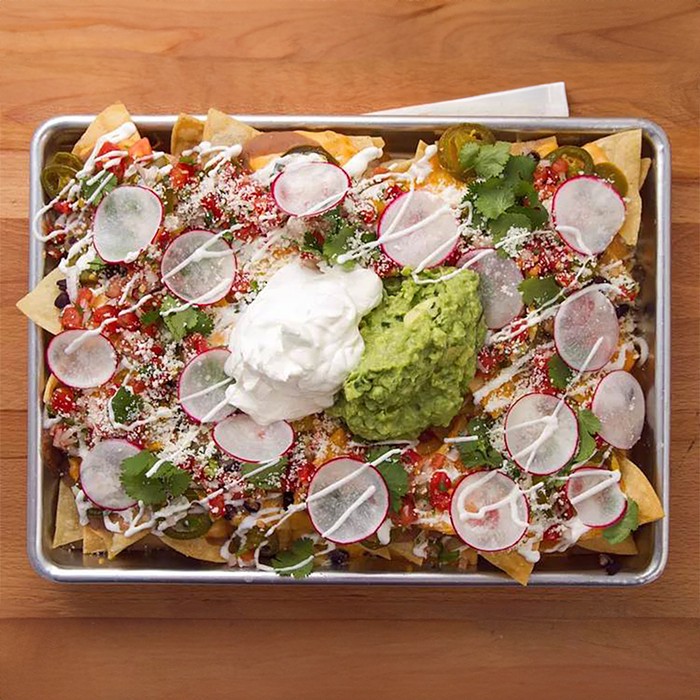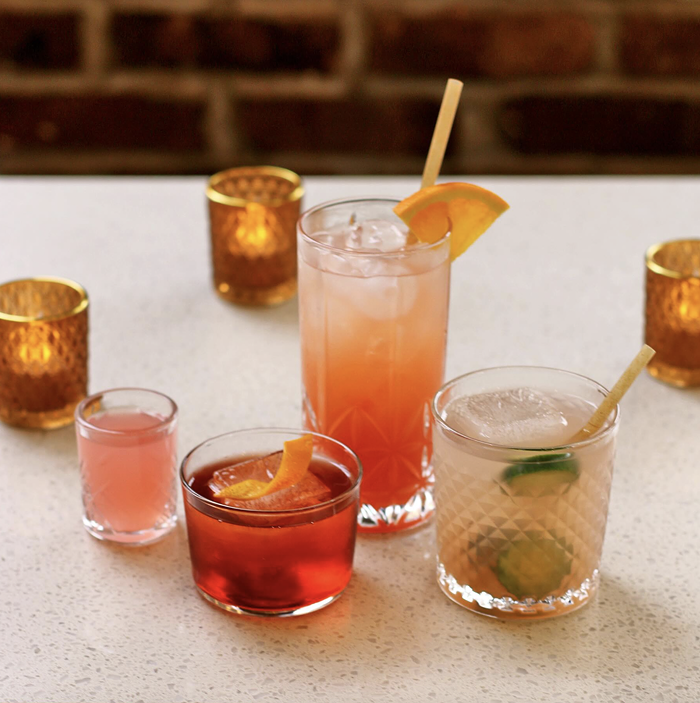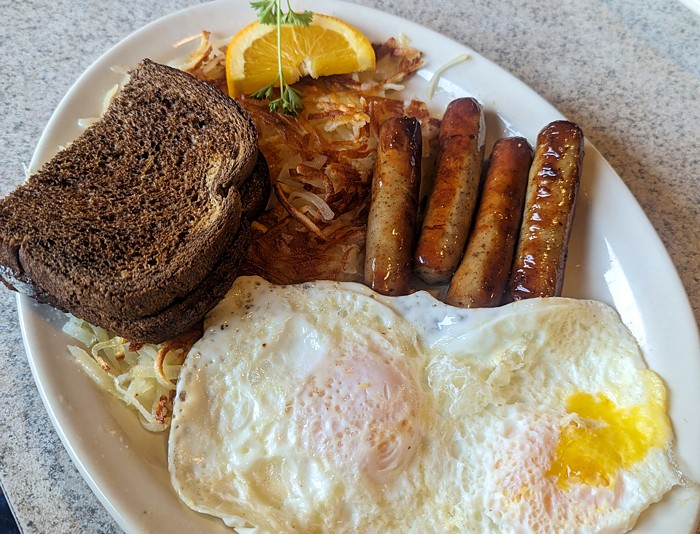Every December during my childhood, my mother enlisted me to labor in her Christmas cookie factory. Together, we'd make hundreds of cookies to give as gifts to friends. Our Christmas cookies did not involve mixed dough, an oven, or even sprinkles. Instead, there was powdered milk, a deep electric griddle, and grated cheddar cheese.
While my friends and their families were making sugar cookies, we were cranking out polvorón. Polvorón, derived from the Spanish word polvo, meaning powder or dust, is a dense and crumbly Filipino shortbread made from flour, powdered milk, sugar, and butter. Some variations include cashews or toasted rice, but my mom was partial to a bit of finely grated cheese to balance out the sweetness.
I spent what felt like hours toasting flour and powdered milk in the griddle, stirring until I was certain my arm would fall off. After adding the butter and cheese, we'd pack the mixture into small tin molds—oval shaped, with a spring mechanism—and punch out individual pieces that we'd then wrap in colored tissue paper. In my mom's words, "Polvorón is a labor of love."
But they weren't always so loved in return. One year, my mother left a tin of polvorón on the doorstep of a friend from church. A few days later, my mom called her to ask if she had received the cookies. She said she had but, because they were so crumbly, she figured they were stale and threw them away. Undeterred, my mother continued to make polvorón for this friend for years after.
Maybe it's for the sake of tradition that many great cooks—who presumably care about their reputations—stubbornly continue to make dishes, despite whether people like them or not.
Take Josefina Ochoa, mother of local chef Monica Dimas. Every year, Ochoa, who immigrated from Michoacán, Mexico, to Yakima 30 years ago, makes two desserts to celebrate the Christmas holiday—for better or worse. One of them is atole, a warm beverage traditionally made of masa, piloncillo (unprocessed cane sugar with a rich, dark flavor), and cinnamon. Ochoa's version uses oatmeal instead of masa. "Oh, I love it," Dimas says, wistfully. "Thin like runny congee and super perfect on a cold holiday night."
In contrast, Dimas says her mother's other Christmas concoction, capirotada—a sort of raisin bread pudding—is something "that I could never see again and be happy for the rest of my life." Capirotada is made from stale bread that's first soaked in a clove-and-cinnamon-spiced piloncillo syrup, dotted with raisins, nuts, and cheese, and then baked into a sweet, gooey mess.
"My mother is a great cook, but this has a particular smell that makes me gag," says Dimas. "I don't know if anyone in my family even likes it. But it's always been around. It is definitely not made for anyone but herself."
If these treats involve so much work and aren't always appreciated by our loved ones, why do we go out of our way to continue to make them? After years of hearing my friend, former Stranger writer Lindy West, describe the traditional Norwegian krumkake cookies that her mother, Ingrid West, makes in large quantities every Christmas, I asked Ingrid whether she'd be willing to show me how to make them. She agreed, partly because I have an electric range, which she says replicates the heat of the traditional wood stove that her recipe was intended for better than her gas stove.
Ingrid West showed up at my front door with a bowl of batter, a large wooden board, and a krumkake iron as heavy as it is old. As with polvorón, making krumkaker—thin, crisp, rolled cookies composed of sugar, butter, eggs, evaporated milk, and cardamom—is a laborious process. First, the batter is spooned onto the iron, which is then placed directly on the burner. The batter sizzles and leaks out the sides as the intoxicating scent of cardamom fills the air. You must be vigilant in scraping off the excess batter as it oozes out before it burns and forms a hard black crust on the stove. The iron is flipped a couple of times to brown both sides, then the crepe-like cookie is carefully removed and, still hot to the touch, rolled delicately into a cylinder.
West has been making these cookies since she was a little girl. She inherited her recipe and two-sided cast-iron krumkake griddle (its handles are wrapped in layers of masking tape, after the black electrical tape she used years ago finally unraveled) from her mother, who emigrated from Norway in 1912. One of seven children, she loved making krumkaker with her mother because "it was some of the only alone time I had with her." Later, as an adult, West would gather with her four sisters every December to gossip, reminisce, and make a slew of the traditional Norwegian cookies—krumkaker, but also sandkaker, pepperkaker, and fattigmann—that their mother used to make. "It wasn't really about the cookies," she says. "It was an excuse, a way to be together."
While desserts happen to be the happy products of holiday cooking, often they aren't the point. When I ask my mother if she thinks the people in the small, mostly white rural town I grew up in actually liked her powdery cheese cookies, she doesn't hesitate to answer: "I have no idea. I just wanted to make them." ![]()
Polvorón are (almost always) available at Beacon Hill's Kusina Filipina (3201 Beacon Ave S, 322-9433), but the polvorón maker is in the Philippines this month. Check back after the New Year.
Krumkaker (and all the ingredients and implements needed to make them) are available at Ballard's Scandinavian Specialties (6719 15th Ave NW, 784-7020).
Monica Dimas cooks for Ethan Stowell Restaurants and runs occasional pop-ups around town. For more information, see milkwoodcompany.com.

